There are so many places to look at and to learn from in building your own community garden. Here are only a handful of them, there are so many! Our local gardens are amazing and they all exist because people worked hard in their free time to create them. Just because they love gardens.
Gardeners are always so generous with their time, and I have nothing but thanks and admiration for everyone who has taken time to help us!
Cody Dock
Cody Dock is wonderful — they have boats after all, they sit alongside the water and an old routemaster puppet bus. Who can compete with that?
Stephen Shiell working with local residents has built an impossibly beautiful garden in this very industrial space, a place of wonder even on a bitterly cold February morning.
Dancing grasses, a splendid area of bog, an unexpectedly successful succulent garden that stunned everyone with its flowers
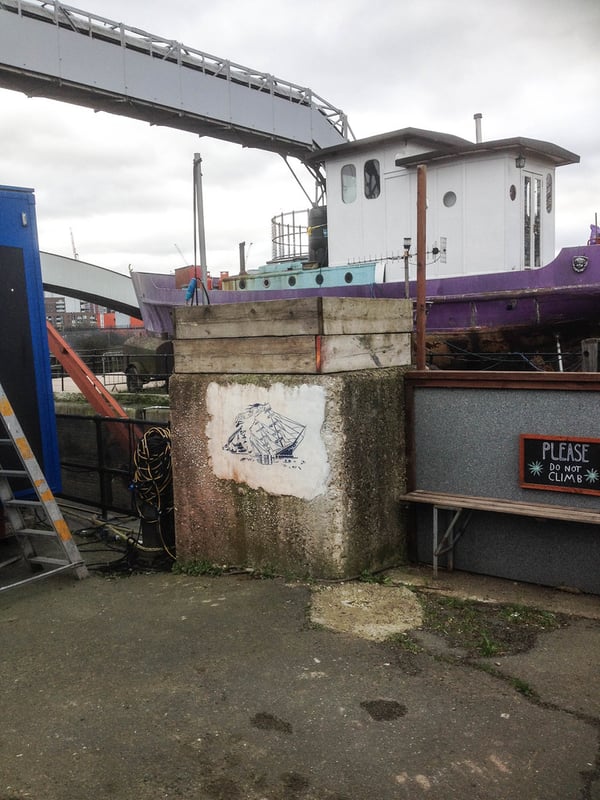 |
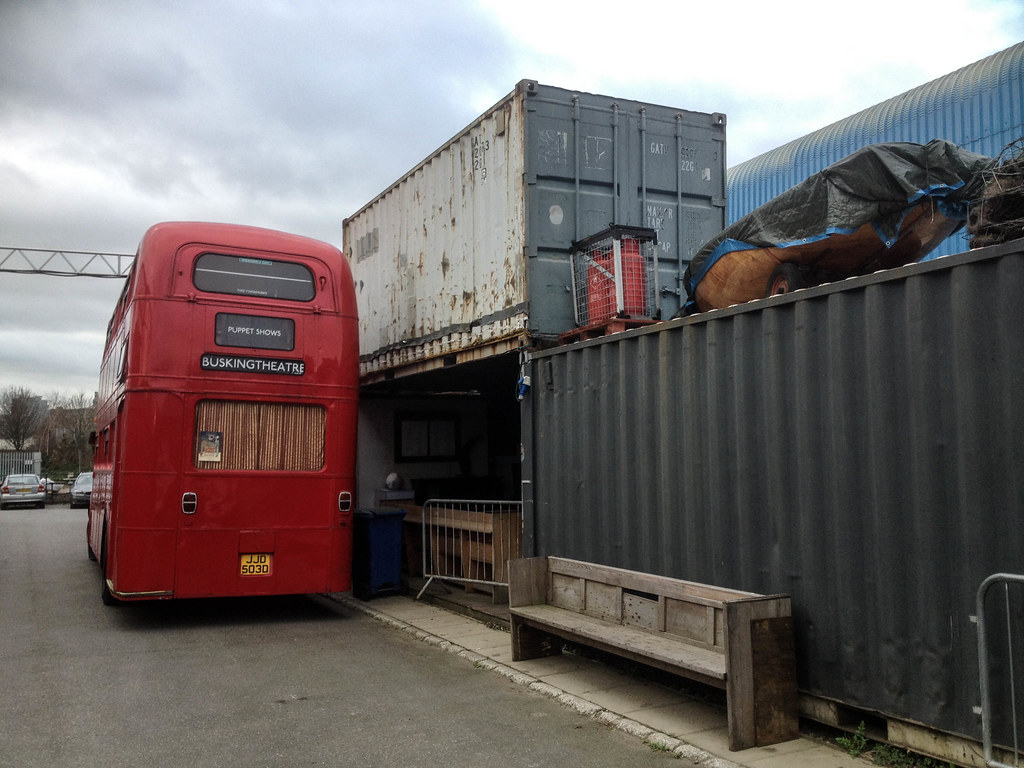 |
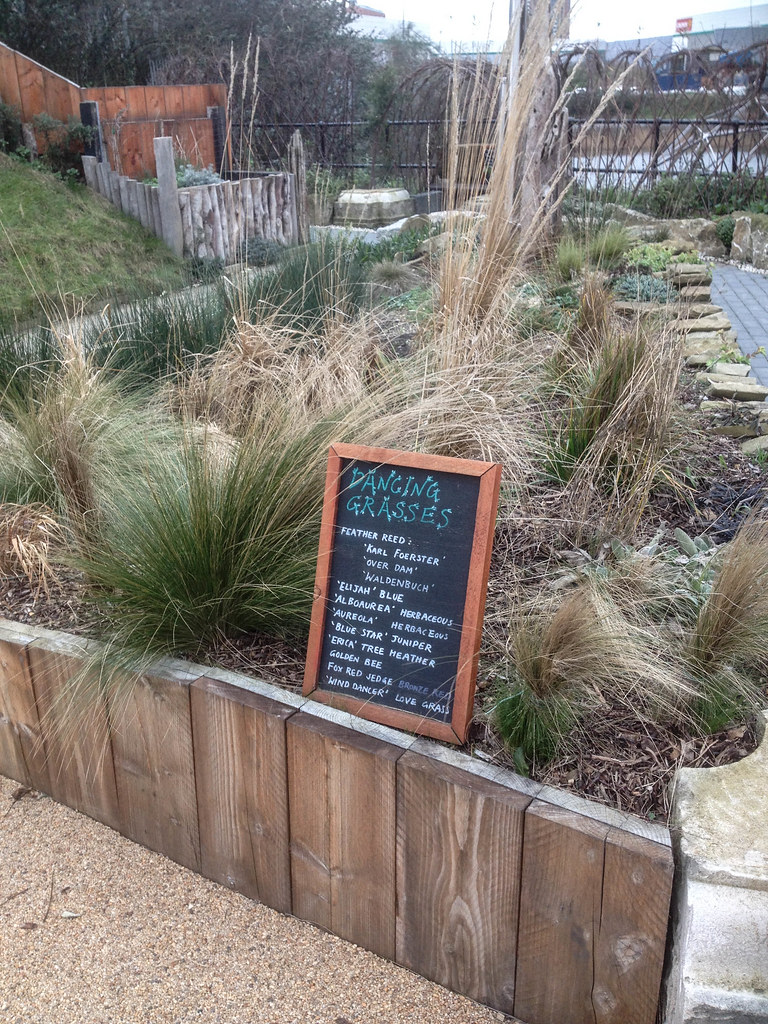 |
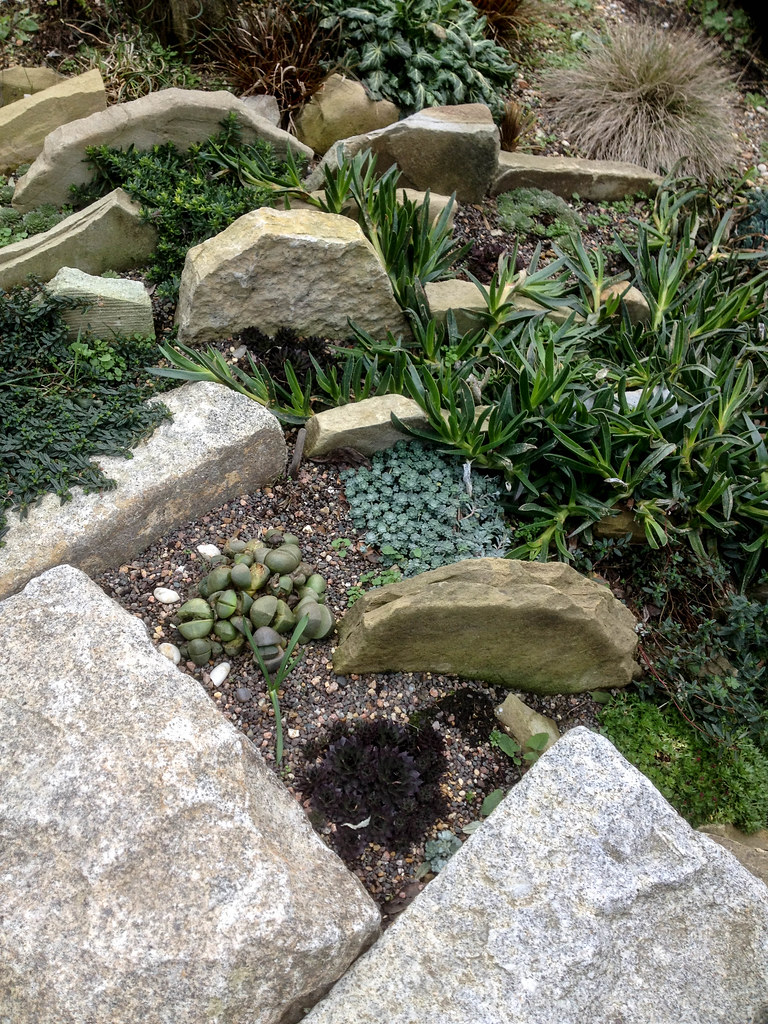 |
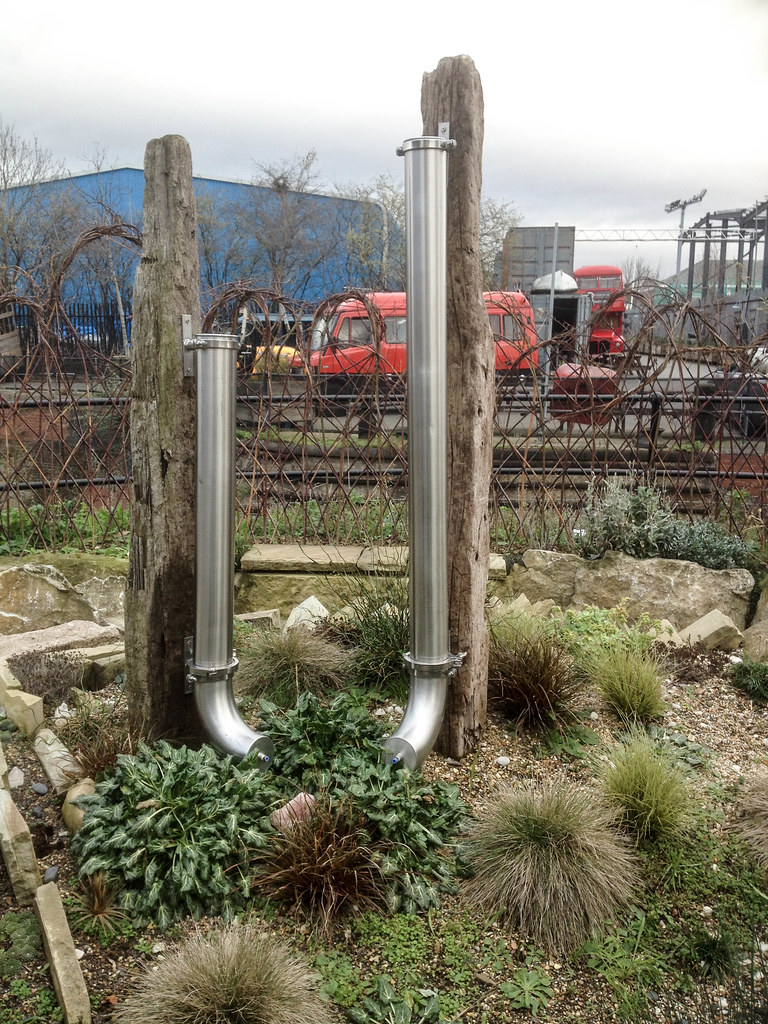 |
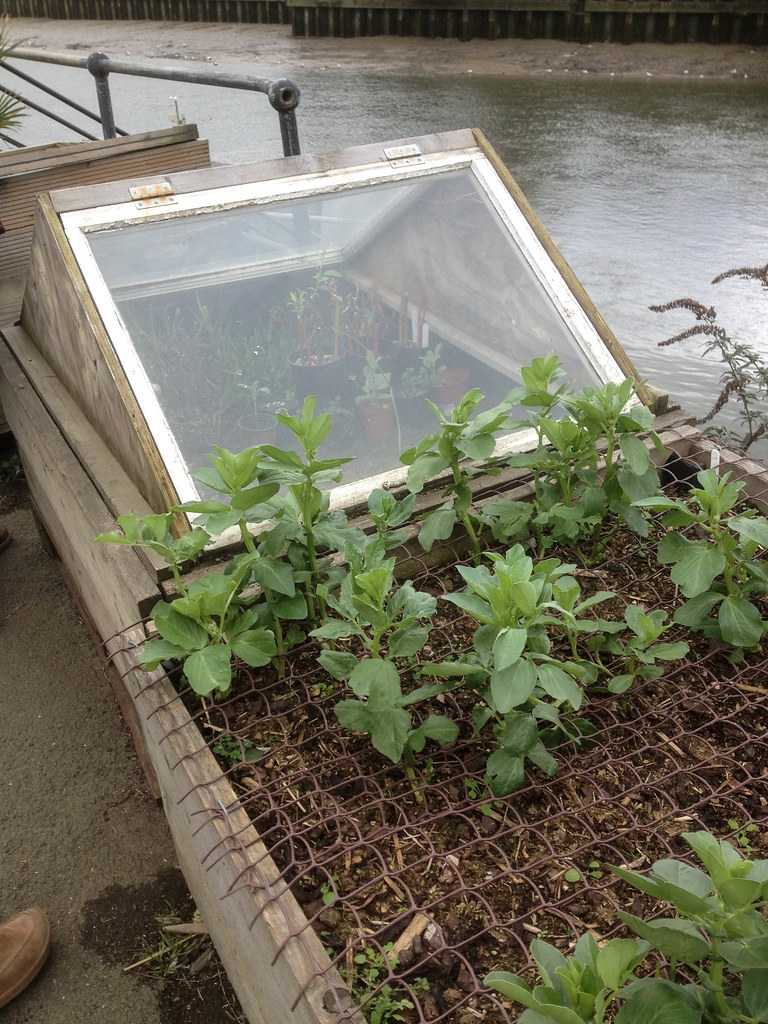 |
A scattering of art across the landscape, like these wind pipes and a living woven fence of willow. I confess, I never knew this was possible with willow. I can’t wait to see it after it leafs out (though some of it has died back, something about the site or the preparation not having been quite to its liking, and this is the greatest lesson I have taken away from all of these gardens. You never really know what will happen and everything will still be okay):
They have built these beautiful and very simple glass lids to some of the growing beds that we might want to consider for the end of this year so we can start some seeds early (a bit too late now sadly!):
An incredibly inspiring place I can’t wait to return to, especially as they are working to further reclaim the pathway along the canal, with its ancient reed beds and stillness in the heart of the city.
Poplar HARCA
Storm warnings were in force when Ana Mae Contreras showed me around several of the gardens on the estates, and despite that I got to see community building in action. Not much had happened at one of the gardens over the winter, so as soon as we started looking around people came down to find out when things were starting up again.
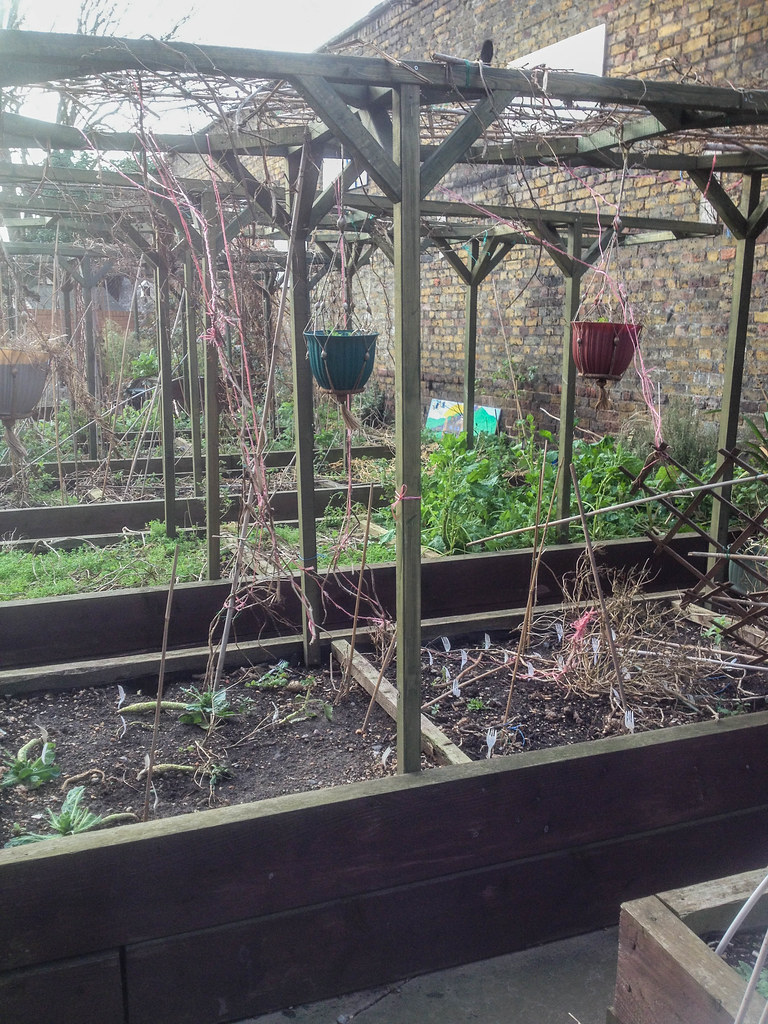 |
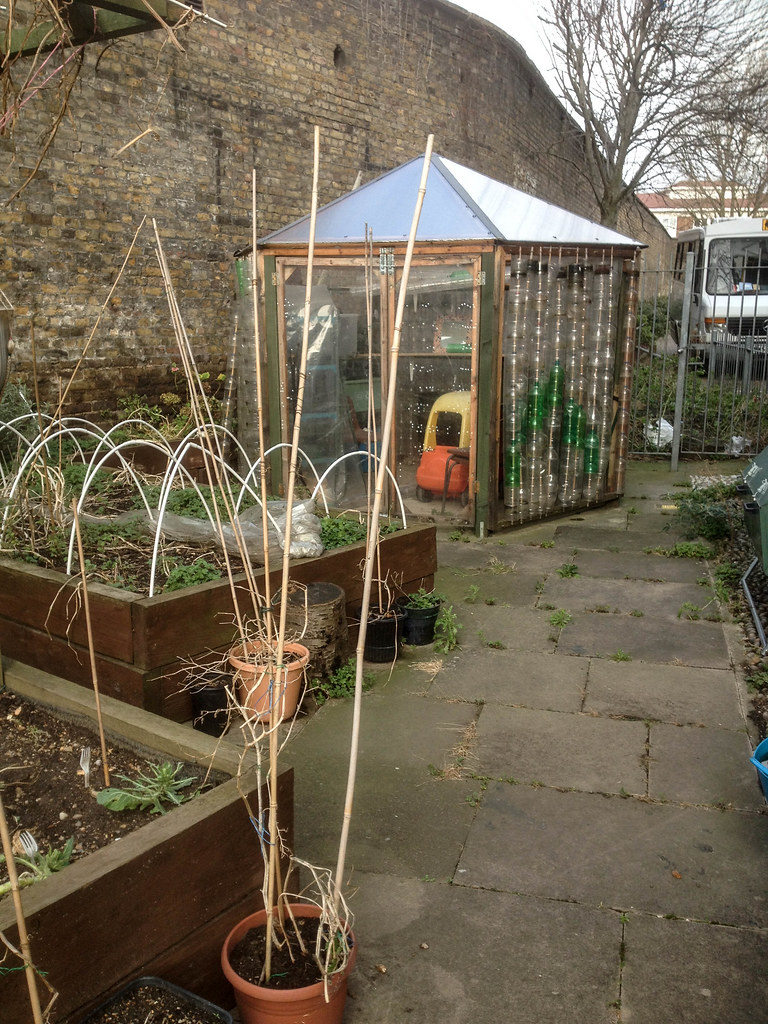 |
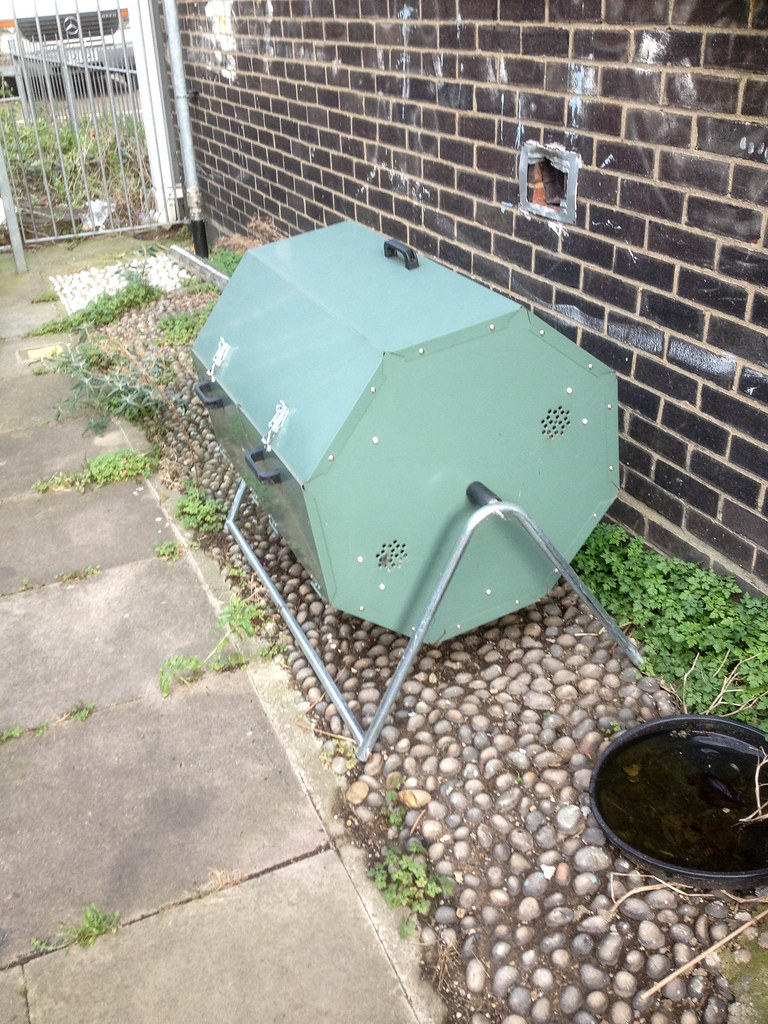 |
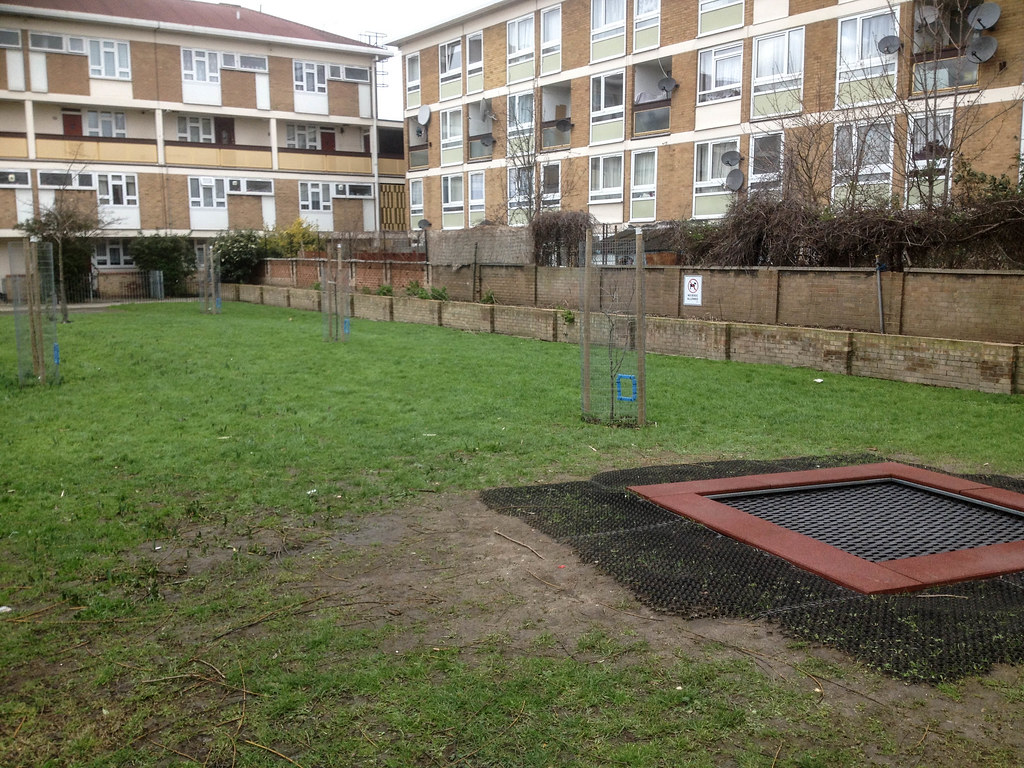 |
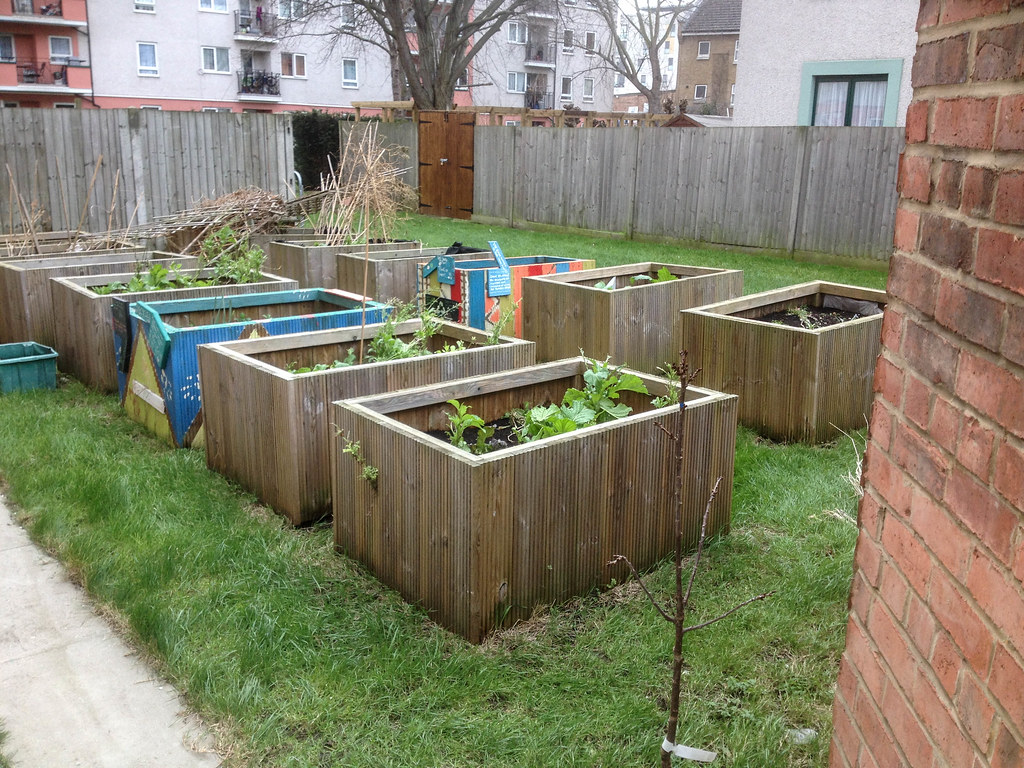 |
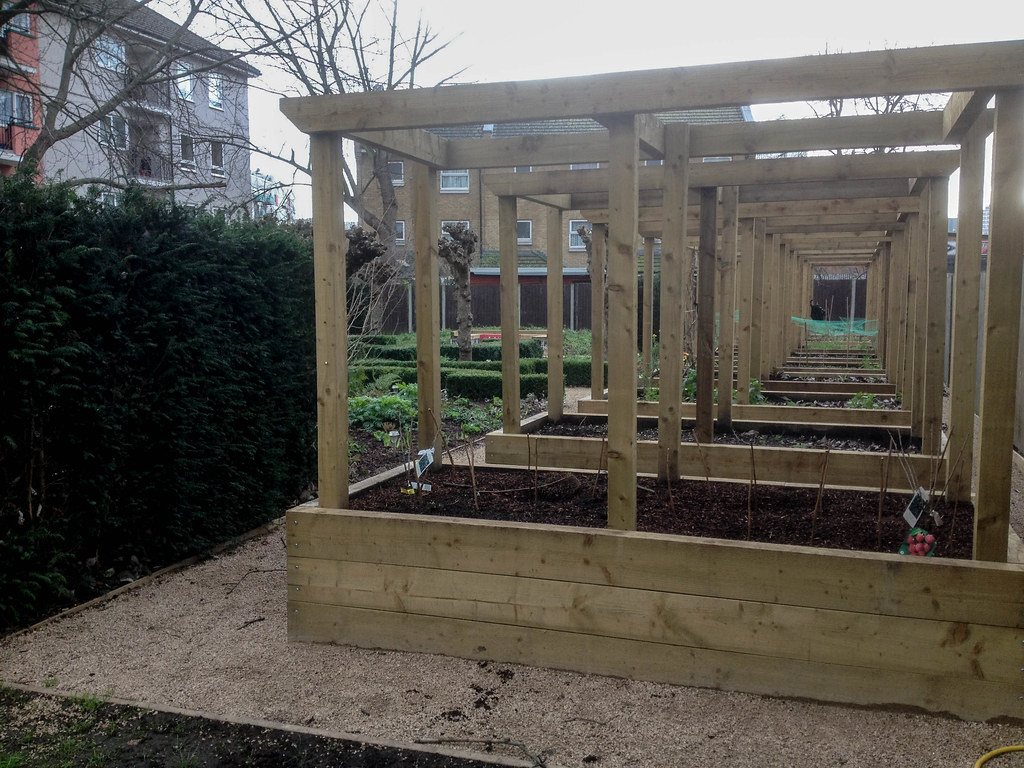 |
Wonderful.
As is the garden, built with strong scaffolding to grow kudu, a gourd popular in Bengali cooking:
I am looking forward to growing some of this, and even more to learning how to cook it. They are in the middle of building a bottle greenhouse here as well, which I love (Stepney City Farm has a beautiful one as well)
They also have a nice and tidy composter, which might be useful for our gardens, though I think we have space for the more traditional kind and its much larger capacity.
Just around the corner from here is a new orchard, which each of the fruit trees adopted and cared for by a family. I loved that, but my heart was truly stolen by an curious square of rubber set into the ground — turns out it is a trampoline, one big enough to hold three grown women sharing a moment of pure joy.
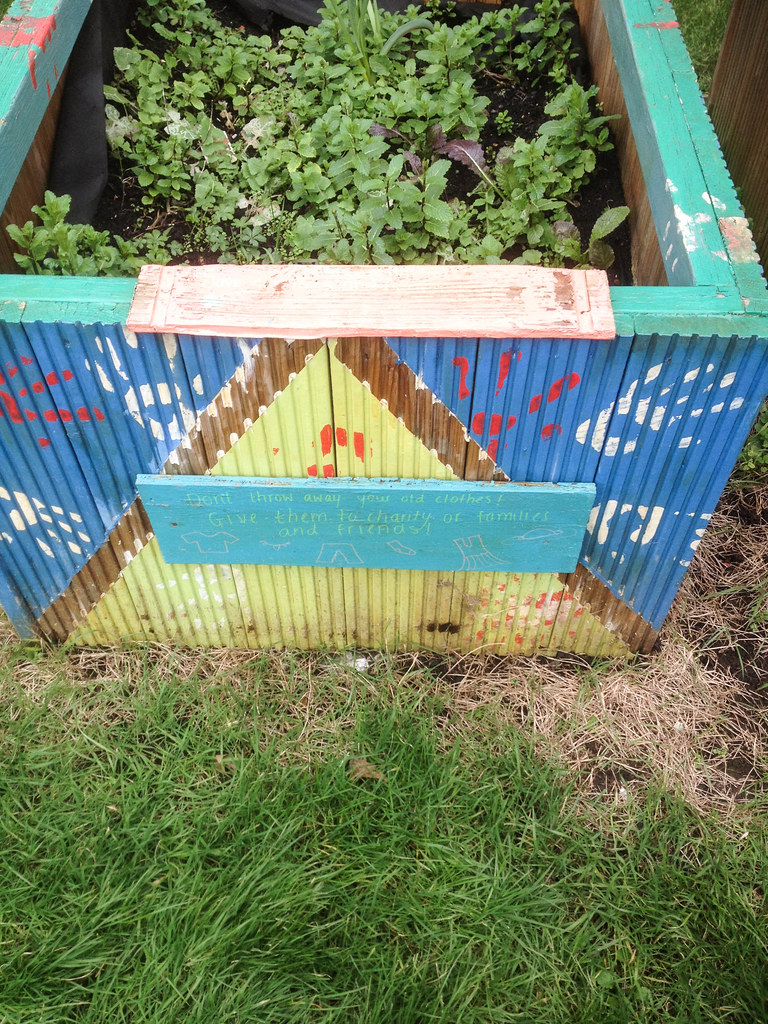 |
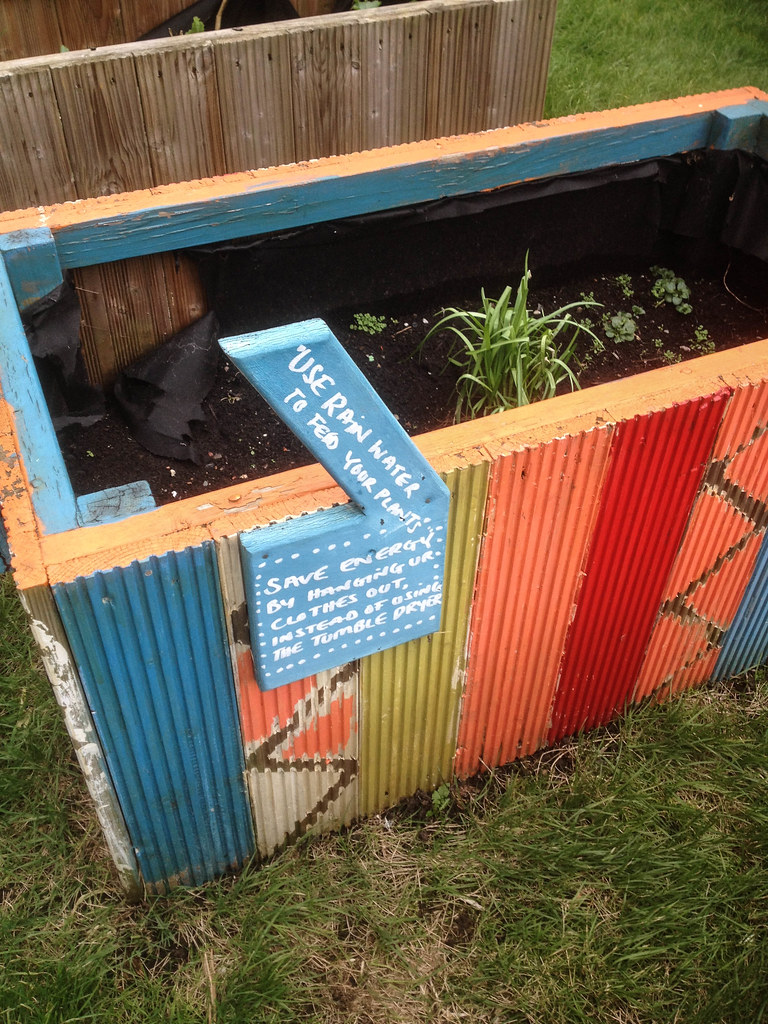 |
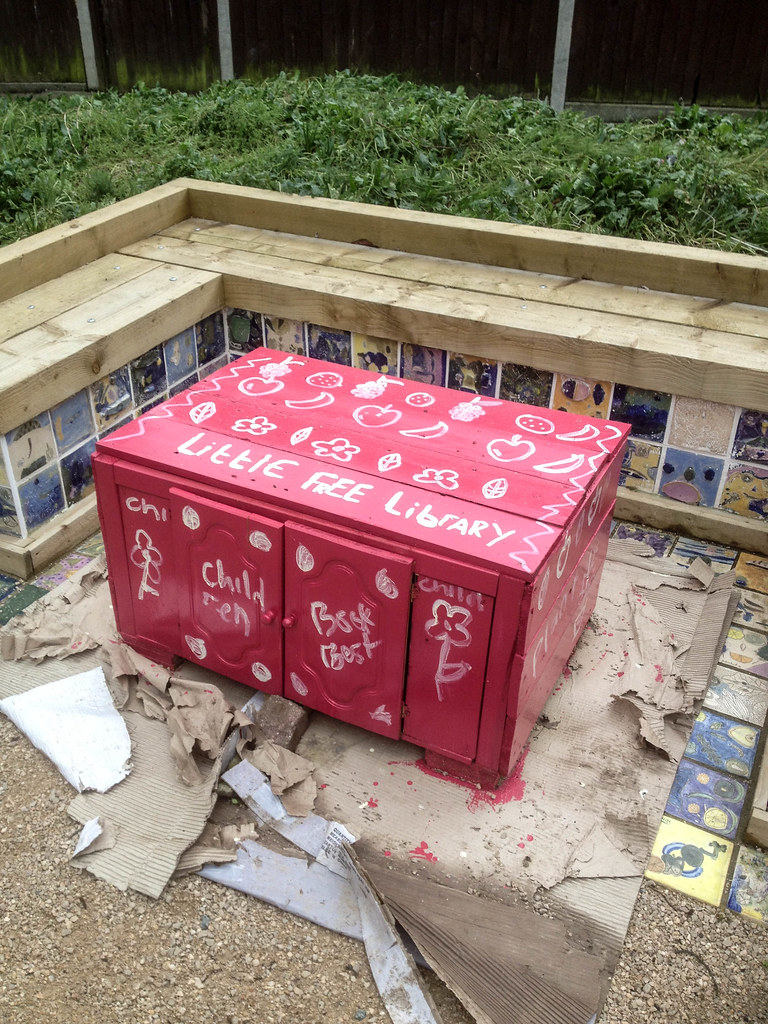 |
Ten minutes away their youth project is working on their own garden — a different form of bed, and beautiful
Stroll down a narrow grassy alley perfect for hosting community cooks and food sharing, and you find more allotment beds of immense solidity:
And this wonderful outdoor library still somewhat under construction:
Woolwich Community Centre Garden
This was a little off the beaten track for anyone in Limehouse, but Seb and I went to an amazing training put together by the Greenwich Co-operative Development Agency on starting a community garden. I would highly recommend it. It walked us through thinking about everything we need to start a garden…this what we came up with
- Space, soil, water, sun, gravel, compost
- Raised beds for growing
- seeds and plants
- committed group to help start and manage gardens, but multiple opportunities for people to drop in and out, volunteer short term
- process for access, managing security
- meeting space, and place for planning building, crops, care
- marketing to get people involved
- fundraising, process to capacitate community to do the fundraising
- budget
- relationship with neighbouring gardens and city farms and allotments for resources and support
- plan for statement of purpose as we can’t have simple allotments, how we might divide harvest, could we do some communal cooking
- insurance
The training was about how we manage to pull together all of those things, and immensely useful. Though we still really need to just learn by doing it.
The weather, as per usual, was freezing cold. It also rained.
Here is the garden at the centre:
The best kind of compost system, and the kind we hope to build:
A handy way to store things, especially all the bits you need to make bee houses:
I would love to do a workshop building those. I’d also love one of these — a worm farm, useful for organic fertilisers, though I am as sold on nettle and comfrey teas.
We definitely have a lot of work to do to be this amazing.
We’ve had more help from Caravanserai, Stepney City Farm, the Women’s Environmental Network and others still to get in touch with. There is so much happening around food growing and urban agriculture in Tower Hamlets, it is exciting to be a part of it.


Leave a comment